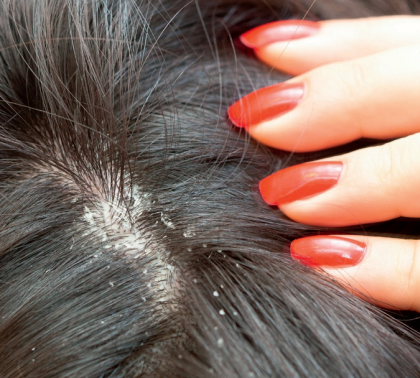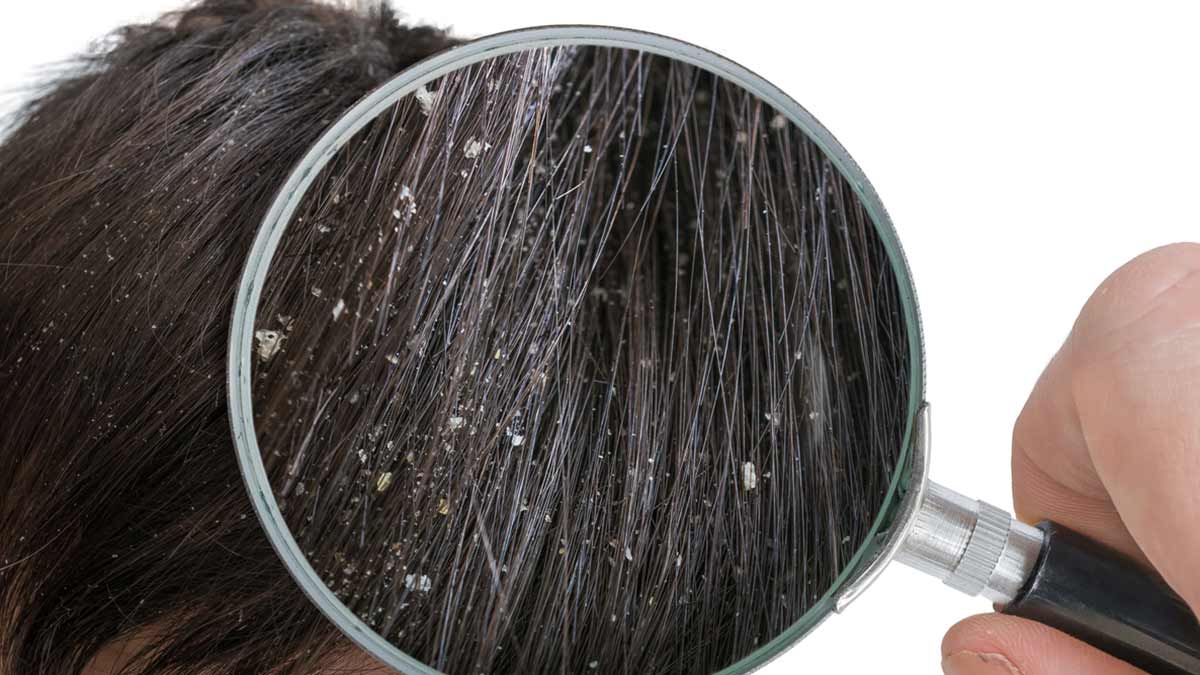Dandruff and flaky scalp are an embarrassing social problem and can be benign or occasionally as a result of a difficult-to-treat skin condition
Dandruff is one of the most common skin conditions which in its basic form, causes the skin on the scalp to flake. Most people with dandruff do not require referral to a GP or skin specialist and dandruff is often linked to some very common skin conditions, such as seborrheic dermatitis.
Aside from the obvious skin flakes on the scalp, dandruff can affect eyebrows and even a beard or moustache. A flaky scalp is a potentially embarrassing social condition, and can flare-up in cold dry weather or under stressful situations. Whilst dandruff and flaky scalp are not purely down to personal hygiene, if the hair is not washed regularly, it can make the problem more obvious. Below are some of the conditions that can cause dandruff and flaky skin on the scalp.
Seborrheic dermatitis: According to the Mayo Clinic in the US, seborrheic dermatitis mainly affects the scalp and is a very common skin condition. The sufferer can experience inflamed skin, scaly patches and dandruff that is hard to remove and while it does not cause permanent hair loss and is non-contagious, it can cause irritation. It can even occur in infants (known as Cradle Cap) and is also referred to as ‘seborrheic psoriasis’ and ‘seborrheic eczema’.
Ringworm (tinea capitis): This presents as a silvery or red patch and may sometimes involve limited hair loss.
Contact dermatitis: This is a more irritating condition that causes inflamed skin or possibly cracked or blistered skin. This is sometimes caused by a reaction to certain ingredients in hair products.
Eczema: Presents as red, dry, inflamed skin patches — very itchy and can appear anywhere on the body.
Dandruff is considered one of the main symptoms of the conditions listed above, however dandruff and seborrheic dermatitis are the most closely-related conditions that can successfully be self-treated. Other factors that can cause seborrheic dermatitis include nervous system pathologies, such as Parkinson’s disease; recovery from a medical condition or event, such as a heart attack; mental health conditions, such as depression; or immune system disorders. If one family member has seborrheic dermatitis, there is a chance that others in the family are more likely to develop it too.

dermatitis (image courtesy of National
Eczema Association, US)
LIFE-LONG PROBLEM
According to an analysis in US Pharmacist from 2013, approximately 50 per cent of the population at any time suffer with dandruff. It normally begins in puberty, but may continue through middle-age and for many people, it becomes a life-long problem. Dandruff is more common in men, partly because of the influence of androgens, but also due to the fact that men have larger sebaceous glands on their scalps, and the problem becomes more pronounced after puberty.
In seborrheic dermatitis, excess skin oil (sebum) is produced in greater quantities and a lipophilic skin fungus known as Malassezia furfur feeds on this excess sebum. This ‘fungal hypothesis’ for the cause of dandruff has gained widespread acceptance. However, there remain some unanswered questions — while most adult scalps are colonised with Malassezia, many patients do not complain of dandruff. Figure 1 illustrates the typical presentation of seborrheic dermatitis.
TREATMENT
There are a variety of anti-dandruff shampoos available in the pharmacy, but the HSE recommends that those with dandruff should choose a product containing one of the following ingredients (depending on the cause of the dandruff):
- Ketoconazole.
- Coal tar.
- Salicylic acid.
- Selenium sulphide (or selenium sulfide).
The Executive also recommends that an anti-dandruff shampoo should be used for at least one month to achieve the best results.
A medicated shampoo can be effective in treating seborrheic dermatitis but if there is no improvement in symptoms after one month of use, or if no product seems to have any effect, it may be appropriate to refer the patient to their GP. It is also advisable to refer to a GP if the skin on the scalp remains red or swollen, or if the scalp is extremely itchy.
The pharmacist is best placed to advise on the best product for dandruff, based on individual patient characteristics, such as the intensity of a rash and how often the person washes their hair.
For simple dandruff cause by seborrheic dermatitis, it is recommended to use an anti-fungal shampoo that contains ketoconazole, which can also help to control itching whilst dealing with the dandruff.







